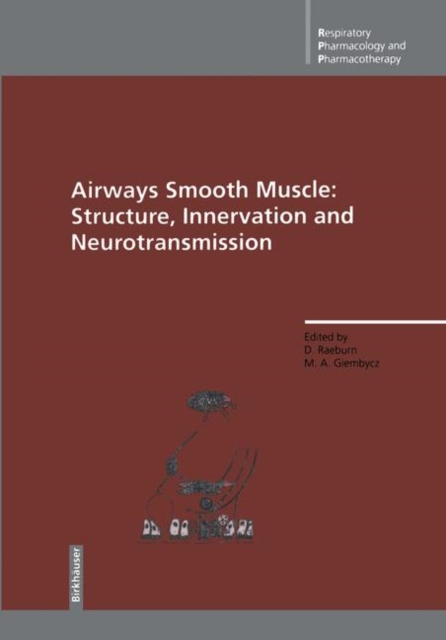
Airways Smooth Muscle : Structure, Innervation and Neurotransmission Paperback / softback
Edited by David Raeburn, Mark A. Giembycz
Part of the Respiratory Pharmacology and Pharmacotherapy series
Paperback / softback
Description
Many factors may influence the release of neurotransmitters from airway nerves [1].
This is likely to be important in physiological control of airway functions and may be particularly relevant in airway diseases, such as asthma and chronic obstructive pulmonary disease (COPD).
Neural elements in airways interact in a complex manner and the activation of certain neural pathways may profoundly influence the release of transmitters from other neural pathways.
Similarly inflamma tory mediators released from inflammatory cells in the airways may also modulate neurotransmitter release.
There are marked differences be tween species in airway innervation and in neuromodulatory effects and, wherever possible, studies in human airways have been emphasised, although information on neuromodulation in human airways is some what limited at present.
Release of neurotransmitters from nerve terminals occurs via a Ca2+ dependent secretion evoked by a nerve action potential, but may also be evoked experimentally by a high extracellular K + concentration which directly depolarises the nerve terminal membrane.
Modulation refers to the alteration of neurotransmitter release, which may either be increased (facilitation) or reduced (inhibition) by the action of a particular agent, thus changing the magnitude of the neurally-mediated response.
Such agents would normally act on receptors on the nerve terminal which are referred to as pre-junctional (or presynaptic) receptors, in contrast to post-junctional (or post-synaptic) receptors located on the target cells which are influenced by that particular transmitter.
Information
-
Item not Available
- Format:Paperback / softback
- Pages:332 pages, 64 Illustrations, black and white; VIII, 332 p. 64 illus.
- Publisher:Springer Basel
- Publication Date:12/06/2012
- Category:
- ISBN:9783034875608
Information
-
Item not Available
- Format:Paperback / softback
- Pages:332 pages, 64 Illustrations, black and white; VIII, 332 p. 64 illus.
- Publisher:Springer Basel
- Publication Date:12/06/2012
- Category:
- ISBN:9783034875608










